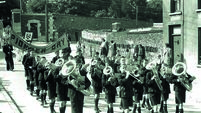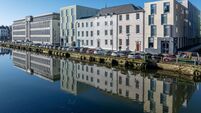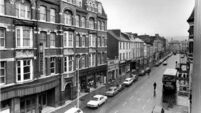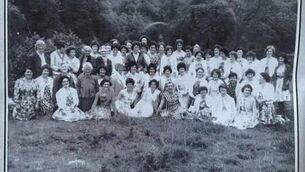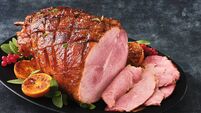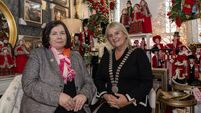Raids on pubs in Cork city... when pints were served out the back window on Good Friday
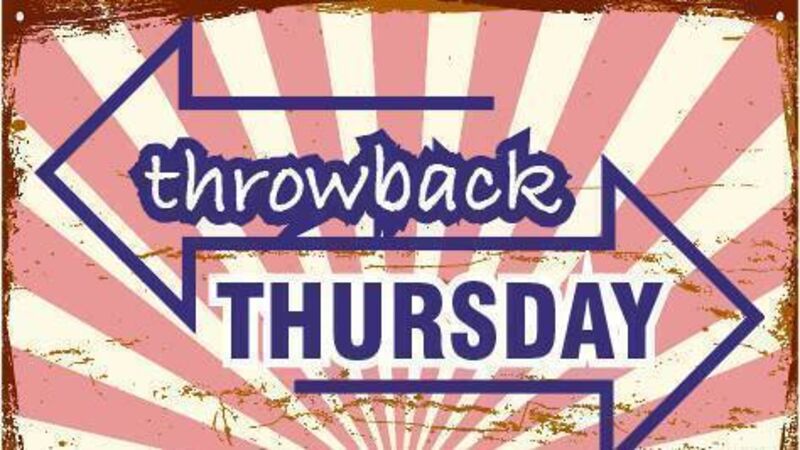
READER Pat Fitzgerald has sent us a couple of lovely (if entirely reprehensible!) stories from his youth, which are bound to raise some smiles among those with similar memories.
In this week's Throwback Thursday, he writes: “Jo, do any of your readers remember the pubs in Cork closing on a Sunday at five o’ clock? That gradually got softened to seven o’clock, much longer afterwards to ten, and then eleven, but back in the day it was 5pm and no quarter given.”
He asks if those who do recall those different times can also recollect bars actually being raided by a local guard. And he has very vivid memories of such things happening on his own doorstep, quite literally.
“I remember The Maple Leaf, which was second next door to our house in Blackrock, being raided on lots of Sundays back in the 1950s. The guard would knock loudly at the front door of the bar, and the place would empty immediately.
“Customers would run out to the back garden, then climb a small wall into Cotters’ garden, then into our garden, and into our house via the back door. They would then go along our hallway and out the front door to safety.”
Didn’t his parents object, or was this an accepted fact of life back in those dry days? Clearly they can’t have minded too much as an impromptu concert frequently ensued, especially for the household being thus honoured.
“Nearly always a singer would burst into a song (or two or three) in our hallway. The songs would have about 20 verses, and they were classic ones like I Dread The Day You’ll Leave Me. Marguerite, Ireland Mother Ireland, Sweet Alice Ben Bolt, How Can You Buy Killarney, and We Are In Love With You My Heart And I.
“I learned a lot of the very old songs myself by listening to some of these men, God love them!”
Now that fits in very well with Betty O’Mahony’s memories last week of people singing in the street going home. Singing came more naturally to us back then, it would seem.
When the nearby Leaping Salmon was raided, recalls Pat, some of the customers appear to have taken up further education by escaping and then strolling casually up the Old School Lane next to the bar.
“And down in the Pier Head Inn when that was raided, customers could be seen coming innocently out the front gates of the Ursuline Convent. And others could be seen coming out of shops. The name of Houdini does spring to mind!”

And as he grew to the age when he appreciated the black stuff himself, Pat learned, like so many other Cork lads, where the possibilities were to be found.
“Jo, in your Throwback Thursday recently, Finbarr McCarthy recalled going out to a pub beyond Ballyvolane and getting pints by the back window on a Good Friday back in the day. Well, believe it or not, around the same time, myself and my mates from Blackrock managed to get pints in the beautiful surroundings of a posh hotel in Cork on a Good Friday in 1968.”
He explains how this came to happen.
“Back in the 1960s, there was a Welcome Wales Week in Cork every Easter, where soccer and rugby teams would arrive from Wales and play friendly games against Cork teams.
“The matches were normally played in Church Roads pitches, as well as Musser and Temple Hill.
“When the troubles in the North of Ireland intensified in the early 1970s, the Welcome Wales Week was cancelled, alas.
“But on this Good Friday in 1968, myself and a good few of my friends walked into the city from Blackrock. When we were in Patrick Street, we noticed five or six buses from Wales parked across from the Victoria Hotel. The buses were full of Welsh sportsmen who were in Cork for the Welcome Wales Week. They were staying in the Victoria.
“One of my mates (a bright spark) observed that the accents of the Welsh guys were very similar to our own Cork accent (all right, boy?) so he suggested that we try and get into the hotel by pretending we were Welsh.
“Off we went, and headed confidently into the Victoria as if we had every right to be there, chatting with quiet, soft-spoken, Welsh-like accents. After a while, we were obviously accepted as part of the guests, and we were able to buy ourselves pints.
“Then, as generally happens at such happy get-togethers, a sing-song started. The Welsh guys would sing, and then a few of us would sing.
“Everything was going very well until one or two of my friends started getting a bit noisy, and De Cork Accent started to make itself a bit obvious again. Plus a few four-letter words started to occur. That was that. The game was up, and we were asked to leave the hotel. Which we did. Quietly.
“It was very late anyway and we walked it home to Blackrock after a great day.”
Well, whatever the abstemious and strict observers of rules may say, all credit to you and your mates, Pat, for coming up with such an intriguing solution to the drought of Good Friday.
It does remind you of Prohibition in the United States, doesn’t it? Forbid it, enforce abstinence, and people will become incredibly creative at finding a way round it. It’s the way of the world.

Now, Donal Donovan is a man who knows a lot about Cork’s former train lines, and he thinks we should all be more familiar with the great little Macroom Railway. Here is his potted history of that service, which ran for almost a century.
“On May 12, 1866, the Cork & Macroom Direct Railway opened for business at the terminus of the Cork, Bandon & South Coast Railway, on Albert Quay in Cork. The arrangement was the subject of a financial levy in favour of the Bandon company.
“The Macroom operation was also given access to Bandon’s rails as far as Ballyphehane, at which stage the two lines separated - Bandon in a south-westerly direction, ending at termini in Bantry and Baltimore, plus several branch lines.”
Relations were not good almost from the beginning, explains Donal, partly because the Bandon company was using Macroom rolling stock without prior arrangement, and partly because the Macroom company was not happy with the financial demands.
Macroom decided to develop its own terminus at Capwell, plus three-quarters of a mile of track as far as Ballyphehane, so it was independent of the Bandon line.
“Capwell was a most ambitious venture - a substantial administration building plus extensive sidings, goods yards, etc.
“As is well known, it became the headquarters of road passenger services in the city, and is now an extremely busy place.
“The administration building has survived in its original format and the extensive surrounding area has been adapted for storing buses.”
Sadly, says Donal, a description of the three-quarters of a mile of railway from Capwell to Ballyphehane does not seem to have survived. It may well have proceeded upwards in the vicinity of present-day Windmill Road, linked up with High Street, proceeded behind a present-day housing estate, and passed under the South Douglas Road, before reaching the junction. Old maps suggest the junction was adjacent to what is now Slieve Mish Park.
“It’s interesting to look at the corner of Capwell Road and South Douglas Road,” adds Donal. “There is an old piece of railing there, and a small grassy area where a railway cutting might have been filled in.
“Some years ago, a newspaper printed an aerial photograph of Christ the King Church, taken in 1931, in which it is possible to discern a railway track running between the houses and the church.
“It is possible also that part of Colaiste Chriost Ri’s grounds may have been built over the railway. It is all guesswork on my part, of course, but nevertheless an intriguing subject for research.”
Donal adds: “Just to finish off the story of Ballyphehane Junction. In 1925, all railway companies in the Irish Free State were amalgamated under the umbrella of Great Southern Railways, so the connection was reinstated, and Albert Quay once again became the terminus for both systems.
“However, the three-quarters of a mile of track was allowed to survive until 1946, and, for example, was utilised to convey fuel to the bus depot during the war years.

Although generally considered a very safe line, on September 8, 1878, a tragic accident occurred at Curraheen, reveals Pat.
“The evening Macroom-Cork train was running slightly late and travelling at a marginally higher speed than normal when the engine with the two leading carriages became derailed. The driver and two passengers were killed instantly. The fireman and one other passenger died subsequently, and there were numerous injuries.
“The eventual cost to the company was £14,782. The subsequent enquiry attributed all blame to poor track maintenance.”
The overall length of the Macroom line was 24 miles, with intermediate stations at Bishopstown (short-lived), Ballincollig, Killumney, Kilcrea, Crookstown and Ryecourt (or Crookstown Road), and Dooniskey.
Shortly after its closure in November, 1953, work commenced on the Lee Hydro-Electric Scheme, resulting in the approach to Macroom becoming submerged. The platform at Dooniskey is still visible, although on private land.
However, passenger traffic had ceased in 1935, and little in the way of excursions or outings was recorded subsequently.
In the summer of 1947, a special train was arranged for a Sunday sports meeting in Cork, but cancelled owing to the existence of overhanging bushes.
On June 13, 1950, however, a group of Irish Railway Record Society members came out by bus and were conveyed back from Macroom to Cork in a six-wheeled carriage which was attached to the monthly livestock train.
The very last train to use the line, says Mr Fitzgerald, was the Fair Day Special of November 10, 1953. The following spring, the tracks were lifted, and the Macroom line was gone for good.
Well, we know that the people of Macroom are always demanding to know when their own personal railway line will return. They even have that last train painted up on a splendid mural, close to the original station which now serves buses instead.
Thank-you for that excellent little history, Pat!
Did you ever travel on the Macroom line? Or have you heard stories about it from older members of your family? Tell us if you have. Email jokerrigan1@gmail.com or leave a comment on our Facebook page: https://www.facebook.com/echolivecork.
